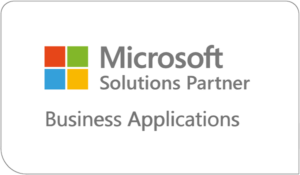Q&A With Steve Jones, Senior Director, Industry Insights Research, Dodge Data & Analytics
Interview by: Sarah D. Morgan, SIS Feature Writer

It’s a pleasure to speak with Steve Jones, Senior Director of Industry Insights Research at Dodge Data & Analytics, as he answers questions about what is new in Construction Technology. In general, Steve spends time researching and writing about how construction technology is making a difference for people in terms of improving the overall performance of the industry at the project level.
It’s important to point out that the insights Steve shares here aren’t the opinions of a subject matter expert alone but culminate from the many cobranded public studies Dodge Data & Analytics conducts for its customers in the construction industry. As he says, “These aren’t our ideas; these are your peers.” Knowing that as we go through this THESIS Q&A gives a fresh take on industry trend data collected from the front lines.
Q: Steve, how did you become a research expert in construction for Dodge Data & Analytics?
A: I have 20 years of experience in architecture and engineering, beginning as a principal with a firm in the Northeast that became the main part of Stantec in the US. I earned my MBA at Wharton, where I studied how to analyze companies, beginning with the architectural industry, where I was working during that time. From there, Primavera tapped me to join them as they moved their scheduling and project management technologies into the emerging Internet space.
Through that experience, I quickly became part of the global construction industry because nobody, anywhere, was doing any major project without Primavera. Later, 21 years ago, McGraw Hill Construction tapped me to start a research group for this, the biggest industry on Earth.
Q: For Dodge Data & Analytics – what does your day-to-day look like?
A: At Dodge Data & Analytics, we conduct research studies of the global construction industry for companies that want to understand where construction is or where specific industry participants are regarding various trends, whether they be sustainability, project delivery, risk management, safety management, or the use of every kind of technology under the sun. We look at what people are doing and where it’s making a difference. What we do all day is this research funded by people who want that research.
We publish these as free cobranded studies because we want the world to know these resources aren’t our ideas—these are their peers. Occasionally, we’ll do strictly confidential things for a company’s marketing intelligence, but most of what we do is intended to be shared with the world.
Q: Through these studies, what are the major trends you’re seeing around adopting new technologies in the construction industry, and how are these expected to evolve?
A: This is 10% technology and 90% sociology. There are too many point solutions on the market, and they have created silos of excellence. Meaning, “I’m doing my job better than I ever did.” But when you ask, “Can you exchange data?” The answer is “no.” There are still large internal process flow breakdowns, and the bigger the company, the worse the breakdown.
There is a move toward pre-integrated solutions we all know as platforms. But the platform itself has become a vastly overused phrase. Many are just point solutions with API. Solutions organized as platforms are painfully gaining traction by displacing beloved embedded point solutions, which dial down the functionality in one silo to be efficient across the organization. In this way, it’s not running in one silo but provides the ability to collect consistent data across multiple silos to do something like predictive analytics, which it cannot do today.
To correct course on this, senior management must realize they haven’t completely checked the digital box. They automated it, but they don’t want to make any new changes. Realizing they need to stay on the digital journey helps the whole industry and the entire project team perform better rather than staying down in the siloed world.
Q: How do you assess the economic impact of emerging construction technologies on traditional business models within the industry?
A: We do a study every year for the Lean Construction Institute. When we routinely ask people about performance, two-thirds of projects are over the planned schedule, and almost half are over budget. This is almost accepted because “that’s the construction industry,” which is a fragmented industry.
You hear things like, “It’s going to take another month, and it’s going to cost you another $10,000.” No industry does that except construction. Imagine if construction ran like every other big industry does with reliability and no uncertainty. You know when it will be done on the 18th of May. It’s done on the 18th of May and will cost $18 million. It’s finished on time for $18 million.
We need this kind of reliability, and because we need buildings and infrastructure, we need these standards. It must be good, but it must be done reliably. Part of the problem is the entrenched certainty of the business model. In this design-bid-build business model, there’s still this pervasive thinking that, well, I have to bid it out there and get the lowest bid.
You’ve got organizations like the Design-Build Institute of America that have been advocating for decades to do things differently. You’ve got the DLC and others trying to promote these integrated forms of delivery that have transparent collaborative approaches.
What will have an economic impact is when we as an industry can reliably deliver on budget and time while doing it safely and with less waste generated than we have been. Because, as I said before, it’s the biggest industry on the planet.
So, imagine spending those trillions of dollars more efficiently. You could probably reduce 20% of the overall spending and reduce the time it takes to do things enormously. That would have a big economic impact.
Q: Much of that’s preconstruction, right? Where does software technology come in to help?
A: Preconstruction is the least appreciated and the most prominent place where risk can be reduced. Indisputably. Many contractors overlook preconstruction as an overhead cost and do as little as possible.
Unfortunately, there’s no data out there. That’s going to be a theme. People don’t spend enough time trying to figure out what went wrong. They’re on to the next job. It’s nobody’s job to analyze and do quality control over the process in many companies.
Most companies aren’t capturing data in a standardized way they can use when getting ready to bid on the next job. If they did, they could examine 16 different jobs and be smarter about how to plan. How do I do work breakdown structures for it? How do I work packaging for it? How much of this stuff is prefab versus how much will I do on-site? Companies should be able to consider these things if they have good historical data.
Q: Can you discuss the role of forecasting and predictive analytics in construction technology? How are tools helping owners and managers make better decisions?
A: That’s the goal. Unfortunately, it’s still more of an aspiration than a reality. The tools are getting there with AI, where an AI engine is ready to help you be smarter about your next job.
To predict where you’re likely to encounter issues, you need a large data set in a machine-readable format, and nobody’s been keeping those. How can you do that painlessly without asking people to start doing extra work?
There are interesting tools out there, like Versatile. They have a camera and sensor that hangs on the tower crane and watches everything that happens on that job site all day long for hundreds of job sites. They can tell you things like, if XYZ doesn’t happen by 9:00 o’clock that morning, you will have unplanned overtime 90% guaranteed. Because they’re collecting that data set right now, eventually, every company will have enough standardized digital data about their own projects.
AI can optimize processes for you based on big data sets. But how do you get those data sets?
Q: How do digital workflows contribute to financial transparency in construction projects? What specific technologies are making the biggest difference?
A: I would say that’s still more aspirational. Everybody sees it as possible, but the business model needs to evolve. The model absolutely does not foster transparency.
But I think, ultimately, the combination of lean practices and some of these new forms of integrated delivery that are beginning to emerge and become more available all the time will create an environment in which you can have an enormous amount of financial transparency. However, you can’t just go into a design-bid-build environment, and simply ask for financial transparency because it’s antithetical to everything about that model.
Q: What new technologies are emerging to help construction project owners better manage risks?
A: There isn’t so much a tool as there is more of a mindset because risk management used to be our, ‘here’s the insurance we’re going to get.’ And then they’re just going to push hard at the job site because they don’t realize preconstruction is where you can do the most impactful risk management. These owner-based platforms are now Project Management Information Systems.
Using these systems, they’re now getting consistent, accurate, timely, and complete data where they weren’t before, and that is a huge way to control and manage risk and be more predictive about future projects in terms of a reasonable timeline and cost.
These two things are coming together: better data capture and a bigger focus on what you can do before breaking ground. That’s probably the combination that will have the biggest impact on risk management.
Q: From an economic standpoint, what are the cost-benefit considerations construction companies should consider when integrating new technologies?
A: Where I start here is most people focus on cost reduction, not cost avoidance. Most of the benefit of these tools is avoiding the little administrative tasks that cost a lot of money. This means it’s not just because you can take two administrative FTEs off the payroll but rather, you won’t have 30% of your budget for unplanned rework.
The problem is that until we research them, most people don’t realize they’re spending 30% on unplanned rework because they’re just not taking the time to capture the ugly stuff that happens at their jobs. The job is finished, and you’re out. But how do you get across understanding the impact of cost avoidance if you don’t know what all those ugly costs are?
And so, it’s a matter of determining what good looks like for your company. First, you must understand where you’re failing and where it is you’re bleeding. Then, you must decide how much better you can realistically make that by applying some technology and how to achieve it within a reasonable time. Because buying a piece of software is only the first step. You must implement it. You probably must change some workflows. You probably must change some other things and how you do stuff to get its value right. But each company needs to understand what good looks like for them, right?
Q: How is integrating AI and automation transforming economic practices in construction?
A: I see an increased amount of offsite construction, prefabrication, and modularization here. Because we have fewer skilled resources who can show up and work on a job site, we’ll see a continual move away from construction into assembly. Job sites will start to look like assembly plants. They’re getting large assemblies and components from other places, and that lends itself very well to automation.
Q: As digital workflows become more common, what are the economic implications of data security and privacy concerns in construction?
A: We did an interesting study for a company called Ignite last year, and many GCs have been hit with ransomware attacks. A startling number considering a contractor can’t survive a week without access to their documents. When we asked how many are putting requirements on your software vendors that they are compliant with, the study came back that they are asking for more protection and resilient software from their vendors. Keeping in mind unfortunately, user behaviors are still the biggest weakness.
So, it’s a huge risk. But not many people are taking advantage of the things they can do, at least preventatively and those cyber insurance policies are out there and available.
Q: What are your projections about the construction industry over the next decade with technology?
A: I don’t like leading with technology because technology is just a tool, an enabler, and this is a people business. At the end of the day all we can do is enable processes more effectively and efficiently with technology. But I think if you could look back 10 years from now and you wanted one word that described that 10-year period, it’s industrialization.
Every other capital-intensive manufacturing industry has gone through this. They went from designing products on paper to designing digital models.
The industrialization that has swept through every other capital-intensive industry is poised now because we finally have enough people doing digital design to push that into a much more industrialized form called Design for Manufacture and Assembly (DFMA).
You can go online right now and make your own BMW and have it show up in a month. That’s where we’re heading, and I think owners will do much more design of their own buildings because AI will help them determine that. Basic components of buildings that get made in factories and simply ordered. It’ll be like taking the idea of building products and just wrapping that all up into chunks of buildings. Or buy a core.
We’re doing some work with a big construction company now. They have an entire process they want us to study and help promote. They go to a site, put up two great, big, strong structural spines, and they build a floor at ground level. Then they just lift it up and click it into place, and they build.
Barton Mallow did it in Detroit, and they want to socialize it everywhere. This industrialization will be the biggest thing in the next 10 years. It’s going to change everybody’s business model.
Some people are going to be winners, and some people will be losers, but major projects in the industry will not look the same 10 years from now. For a guy doing 2 houses a month in the suburbs’ life will be about the same, but the big stuff will be highly industrialized.
That’s just one example of industrialization. We’re doing a study right now for the Department of Energy about the trade-off between on-site construction and modular construction, where the labor dollars are being spent, and all the attendant aspects of that, right, how much safer it is, how much less waste there is, all those kinds of things.
The Department of Energy has the leverage to say this is why we’re investing here. Yes, we’re taking jobs off your job site. But it’s for a good reason. The jobs are happening here, and the entire system works better.
Another tech consideration is a study on owners specifying the PMS that their GCs use. Half of the 100M companies in the study said they’re putting digital requirements into their contracts with the GC and then cascading down to their trades. And when we asked how often you require them to use your PMS system if you own one, the answer was about 1/4 of them. This has increased rapidly over the past 15 years and will impact projects going forward.
Q: What economic benefits do sustainable and green technologies bring to construction projects? How do they alter risk profiles?
A: We do a big study in 63 countries every three years. World Green building trends: We can prove yearly that green buildings are more valuable for developers to resell.
Almost everybody agrees that it’s the right thing to do, and we’ve watched this evolve over the years from just being all about energy savings to now being about the health of the occupants and resilience to climate change.
The risk profile is really for the planet now, not so much for the project. But yes, I think the degree to which owners and their own organizations all have environmentally sustainable goals in place now is rippling out into their building programs. They’re beginning to ask harder questions and demand more sustainable performance from their built assets than they ever did before.
If you don’t have a good story about your company and your ability to support sustainable goals and design construction, you won’t get the work.
THESIS Statement: “Help move the industry to be less costly, safer, more reliable, highly industrialized, and wasteless.”
Q: Where can readers find your free studies?
A: They are on www.construction.com available for download and use. Why do the companies that hire us want us to share? So everybody can get better at these things.




This article is a fantastic read—thank you for sharing!
Excellent interview and insights.